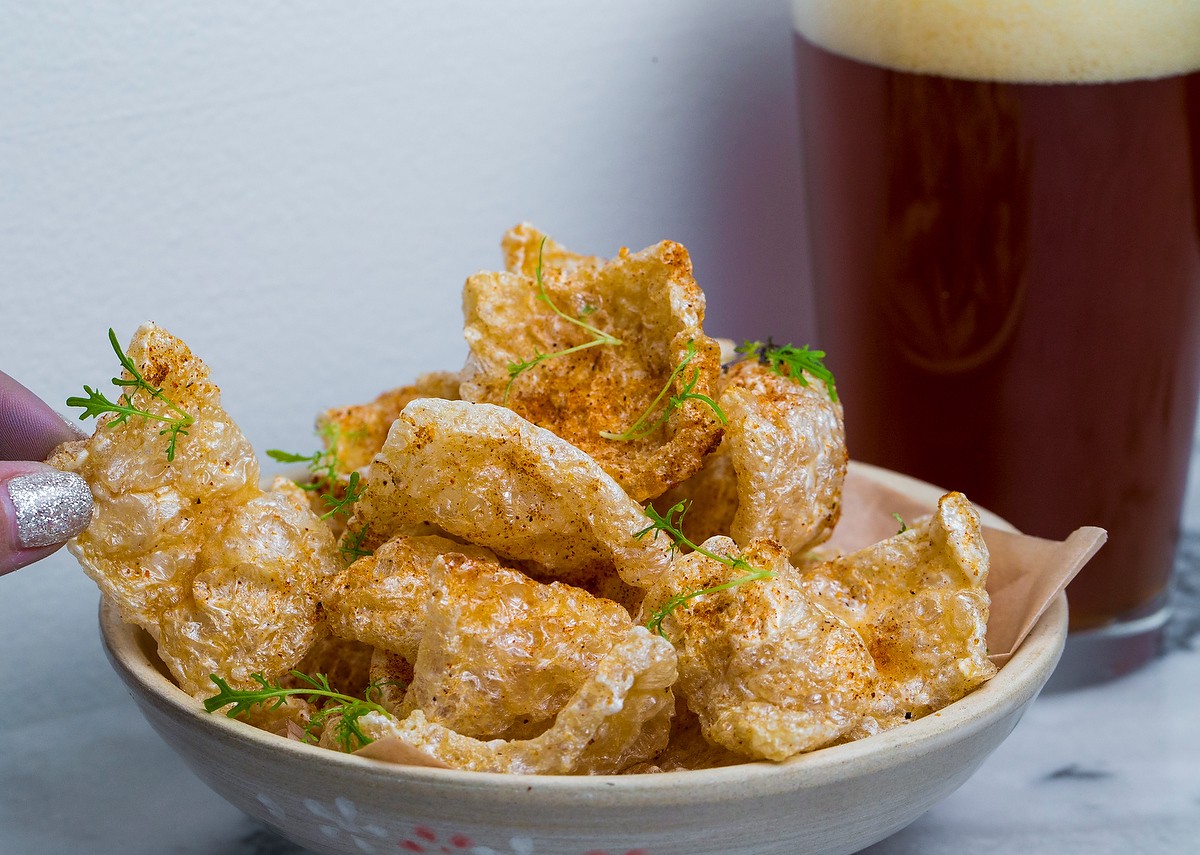
I’ve been saying for years that everything that’s exciting and new in the Orange County food scene happens in SanTana, but it’s never been more true than now. To cutting-edge chefs, the city’s downtown, at this very moment, is the South of France during the Belle Époque, when the likes of Van Gogh, Gauguin and Cézanne produced their most iconic works.
Just like that period, there are intensely personal expressions of art happening in DTSA’s kitchens—bursts of creativity I’ve not witnessed within a 2-mile radius except when it’s art festival season in Laguna Beach. Just in these few months alone, we’ve seen Danny Godinez open El Mercado, Mexican haute cuisine done in rare form. Before that, Filipino pop-up Irenia set up permanent roots in what used to be the Crosby. And now Ross Pangilinan—who previously dazzled Costa Mesa theater patrons for seven years with Leatherby’s Cafe Rouge—has created Mix Mix, a magnum opus in Little Sparrow’s old space on Third and Main streets.
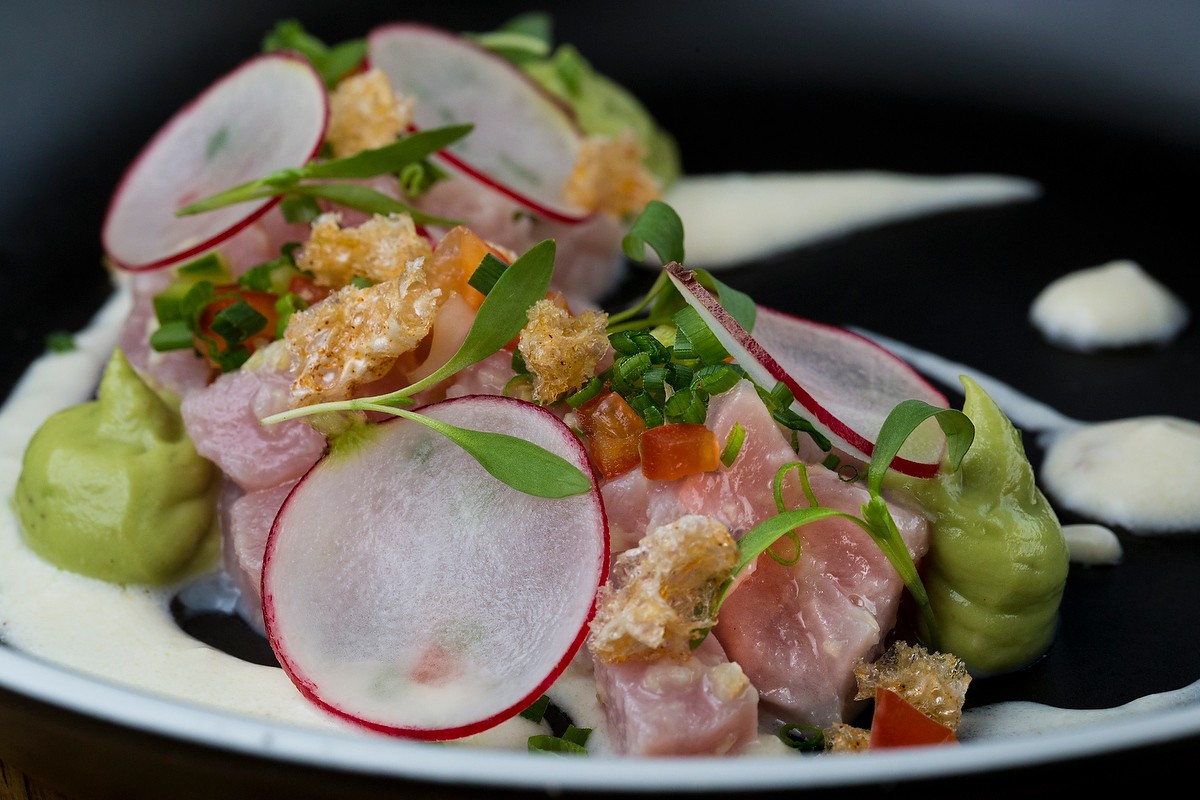
At the restaurant, named after the Filipino dessert halo-halo, Pangilinan, who is Pinoy, serves the food that I can tell he has been yearning to do but couldn’t when he worked under the corporate thumb of the Patina Group. And Filipino flavors certainly abound on his menu. There’s even sinangag, his version of garlic fried rice so decadent and rich—topped with two falling-apart footballs of pork cheek cooked adobo-style—that if it were the only dish I had, I’d still declare the restaurant his masterpiece.
But Mix Mix is not a Filipino place, per se. It’s post-Impressionist Filipino—exactly the restaurant I’ve always hoped Pangilinan would do. This is Filipino cuisine cooked with abstract brush strokes. And as a fan, it was fun for me to look for where Pangilinan has slipped in the patis and the calamansi. Sometimes he does it so subliminally it’s like a magic trick. The salmon I had there one night was a model of precision cooking: all crisp skin crackle on top, the middle perfectly moist and pink; but there was something familiar to the broth. Was that a distillation of sinigang, Filipino tamarind-soured soup? Or was I just imagining it?
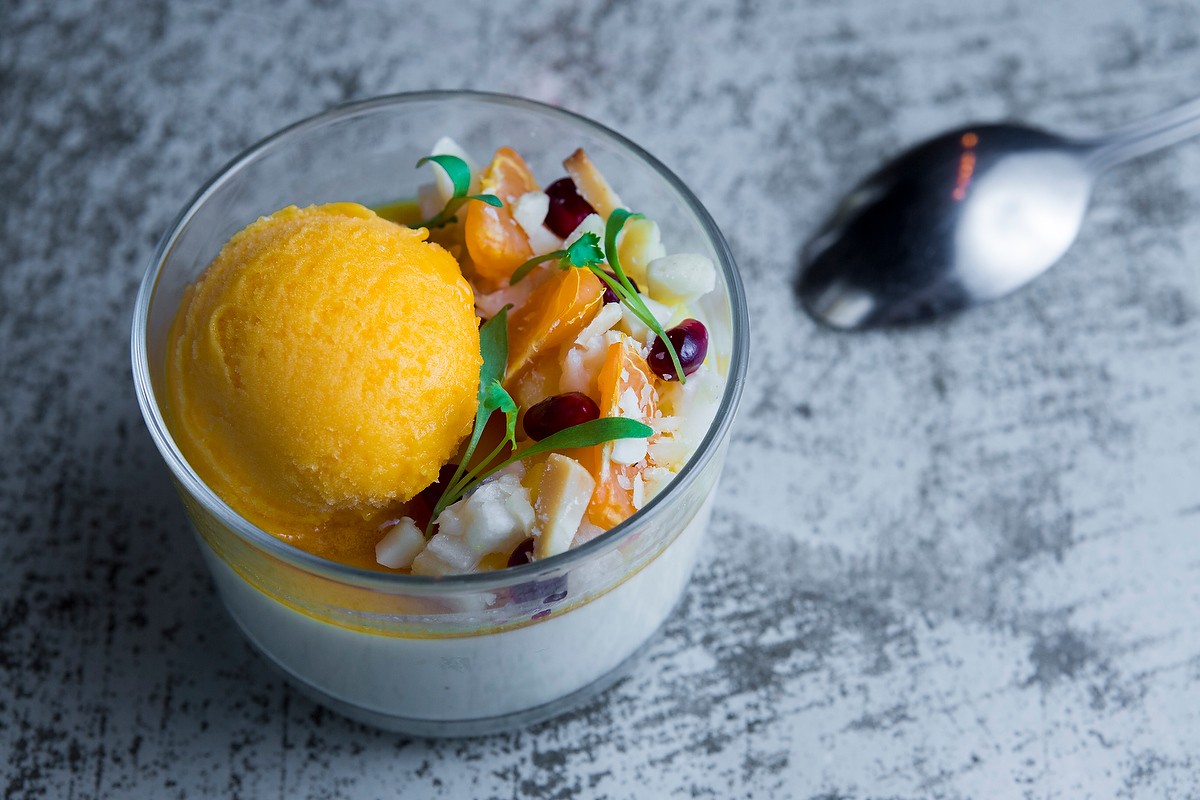
The only dish called out as Filipino was the one named that: “Filipino Ceviche.” But it’s actually closer to Tahitian poisson cru than anything—cubes of yellowfin tuna soured with lime and coated in a rich coconut cream. The Filipino part, I think, came with the addition of crumbled chicharrones, which acted as crunchy croutons against the soft coolness of the fish’s flesh.
By the way, instead of a basket of bread and butter, you’re going to get a big bowl of chicharrones to start. And because Pangilinan knows they’re addictive, he has instructed his servers to offer refills whenever they see an empty bowl. He loves pork rinds as much as any Pinoy. I saw more on top of the deviled eggs, which aren’t just composed of egg yolk and mayo, but also sometimes salmon or crab.
Yet, the most important and noticeable departure from his Cafe Rouge days is that Pangilinan is now able to offer substantial discounts on his food. The tuna poke layered on top of grilled bread, the albacore tostada and delicately fried potato croquettes filled with chorizo—part of the “Snacks” menu—are all marked down by $2 during weekday happy hour. But the best deal is the three- or four-item prix fixe, which can save you upward of 20 percent compared to ordering à la carte.
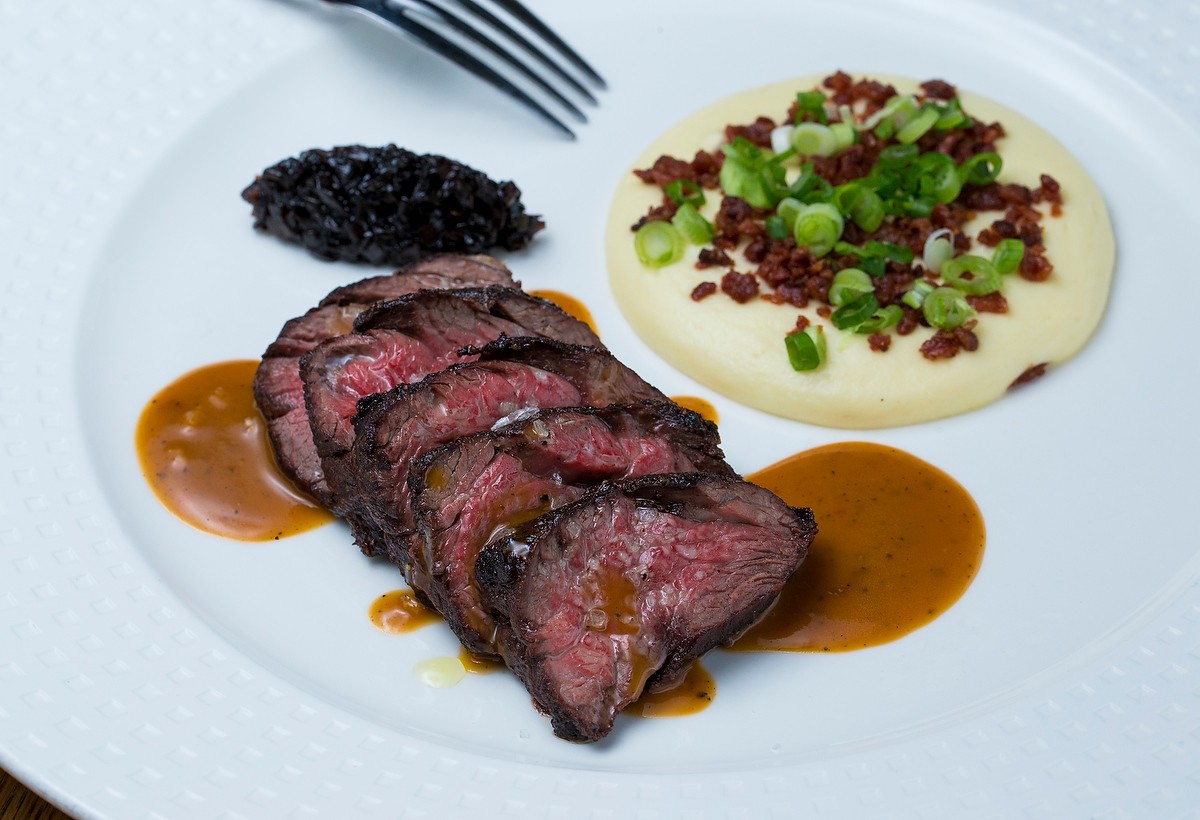
And when you opt for the four-course prix fixe, you must get the hangar steak as the main entrée. There are no Filipino ingredients to speak of here: It’s just sublimely tender and properly seasoned beef, cooked and sauced exactingly, served with a sculpted scoop of a tangy shallot marmalade and the most buttery mashed potatoes, which are also sprinkled with scallions and crispy bits of bacon.
For dessert, Pangilinan does an excellent tiramisu, but you’d be foolish not to try the tropical verrine, a coconut panna cotta topped with all matter of fruit and a bright passionfruit gelée. It’s his tribute to halo-halo. I licked the bowl clean, but to be honest, I squeegeed every drop from every dish I had at Mix Mix, especially the gochujang sauce runoff that Pangilinan used to flavor a stir-fry of roasted cauliflower, peanuts and sliced orange segments.
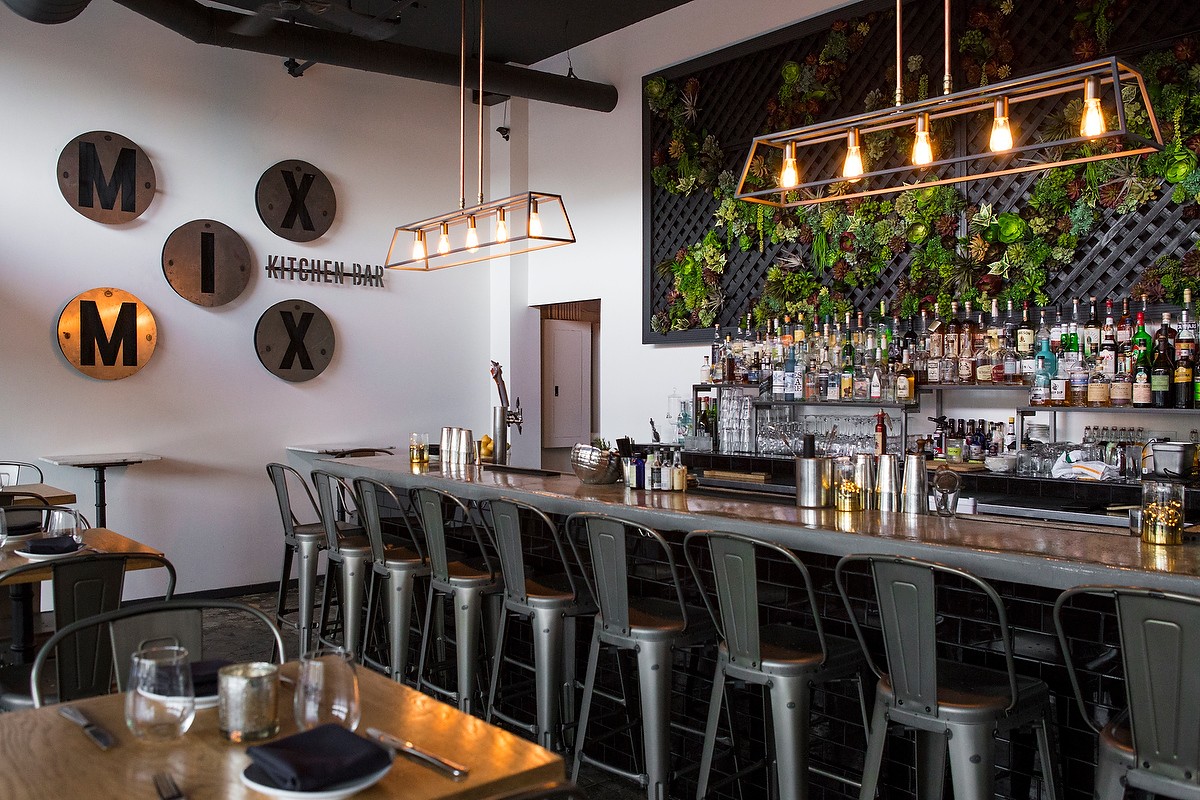
I’m convinced there’s nothing Pangilinan produces at Mix Mix that’s not brimming with the creativity of an artist in full bloom. He’s at the top of his craft and where he belongs: in Santa Ana, which is—to borrow what Van Gogh wrote about the South of France—where the whole future of Orange County food is to be found.
Mix Mix, 300 N. Main St., Santa Ana, (714) 836-5158; www.mixmixkitchenbar.com. Open Tues.-Thurs., 5-10 p.m.; Fri.-Sat., 5-11 p.m.; Sun., brunch, 11 a.m.-3 p.m. Dinner for two, $40-$130, food only. Full bar.
Before becoming an award-winning restaurant critic for OC Weekly in 2007, Edwin Goei went by the alias “elmomonster” on his blog Monster Munching, in which he once wrote a whole review in haiku.

